Top 8 electric and hybrid SUVs in Thailand
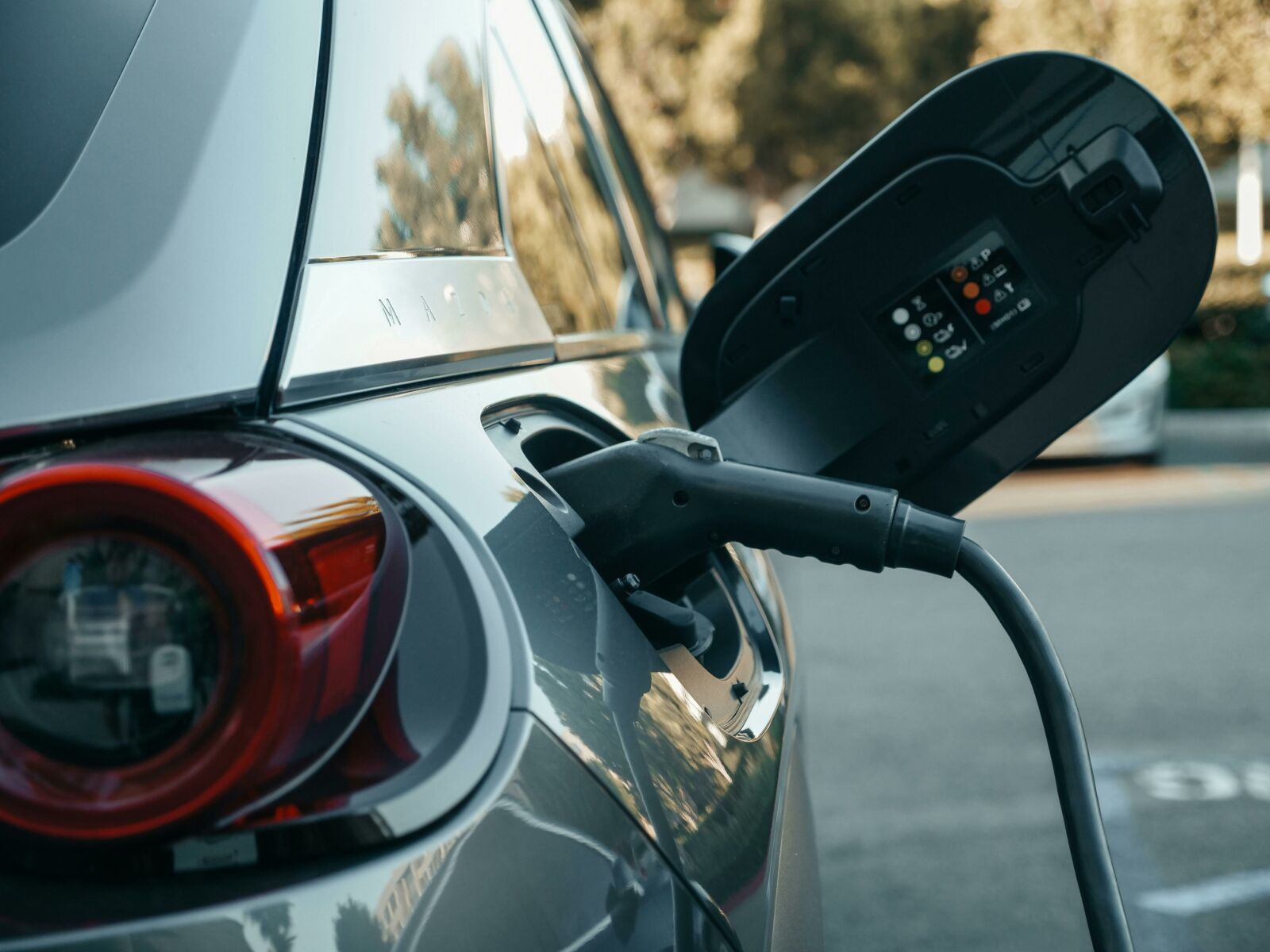
Are you on the hunt for the ideal electric or hybrid SUV that strikes the perfect balance between style, efficiency, and affordability? You’re in luck! In 2024, some incredible options are available for around 800,000 baht in Thailand that are perfect for city living and family adventures.
With spacious interiors and smart safety features, these SUVs are designed to fit your lifestyle without stretching your budget. Let’s explore the best picks that will elevate your driving experience while keeping your budget intact.
EV and HEV: What is the difference?
But before we dive deeper into the list, you need to know the difference between each type of electric vehicle. Not every EV runs on electricity alone. Some are hybrids as well and each type may hold distinct advantages over the other so it is important to consider these differences before making a decision.
You may have heard these terms being tossed around while you are looking for your next fuel-efficient car, but what do they mean? Well, they are quite simple, and the terms indicate the differences in how the batteries of the vehicles operate.
Electric Vehicle (EV)
An EV is a fully electric vehicle that has rechargeable batteries, this is the only source of power for the vehicle, meaning that they do not have a petrol tank at all. They are also referred to as Battery Electric Vehicles (BEVs), these terms can be used interchangeably.
The power generally comes from the power grid, and the vehicles can either be charged at charging stations or at home if you have a charging port. You won’t need to fuel these cars up, only charging is needed.
Hybrid Electric Vehicle (HEV)
Hybrid Electric Vehicles are both electric and gas-powered. This means that they have an internal combustion engine (ICE). But in most cases, they are still far more efficient than traditional ICEs as the engine itself, along with the hybrid system and other factors such as energy generated from braking is used to power the batteries, which drive the vehicle.
Utilising energy from braking is known as regenerative braking, this captures the energy that is typically lost as heat during braking and converts it into electrical energy stored in the battery.
This means that you cannot charge your HEV. Although they are technically still electric, you will still need to fuel it up as normal. HEVs are also cheaper to run compared to traditional ICE vehicles and will save you more money in the long run.
| Category | Electric Vehicles (EVs) | Hybrid Electric Vehicles (HEVs) |
|---|---|---|
| Power Source | Fully electric, powered only by a rechargeable battery | Combination of a rechargeable battery and a petrol engine |
| Charging | Must be plugged in to recharge; no petrol needed | Does not plug in for charging; relies on regenerative braking and petrol engine for power |
| Emissions | No tailpipe emissions, reducing air pollution | Lower emissions compared to traditional vehicles but still produces some due to petrol use |
| Fuel Efficiency | High efficiency, as energy is directly used from the battery | More efficient than traditional vehicles, but not as efficient as EVs due to dual power sources |
| Range | Range limited by battery size; range anxiety may be a concern | Longer range due to petrol backup; not limited by battery alone |
| Noise Levels | Quiet operation with minimal noise | Quieter than traditional vehicles, but some noise from the petrol engine |
| Maintenance | Less maintenance (no oil changes, fewer moving parts) | More maintenance than EVs due to petrol engine but less than traditional cars |
| Cost of Ownership | Moderate upfront cost, but cheaper to operate and maintain over time | Slightly higher upfront cost compared to EVs; running costs are also higher due to petrol use |
| Environmental Impact | No tailpipe emissions but battery production has environmental costs | Lower environmental impact than traditional cars, but still contributes to emissions from fuel |
| Infrastructure | Requires access to charging stations or home chargers | No need for charging infrastructure; can refuel at any petrol station |
Top 8 electric and hybrid SUVs in 2024
Looking for the perfect SUV that fits your budget and lifestyle? Here’s a roundup of great options for around 800,000 baht for 2024. Whether you prefer fully electric or a hybrid, these SUVs are the right size for navigating city streets, offering versatile space and impressive fuel efficiency. Let’s take a closer look at some fantastic choices that won’t disappoint!
Electric SUV options
1. NETA X
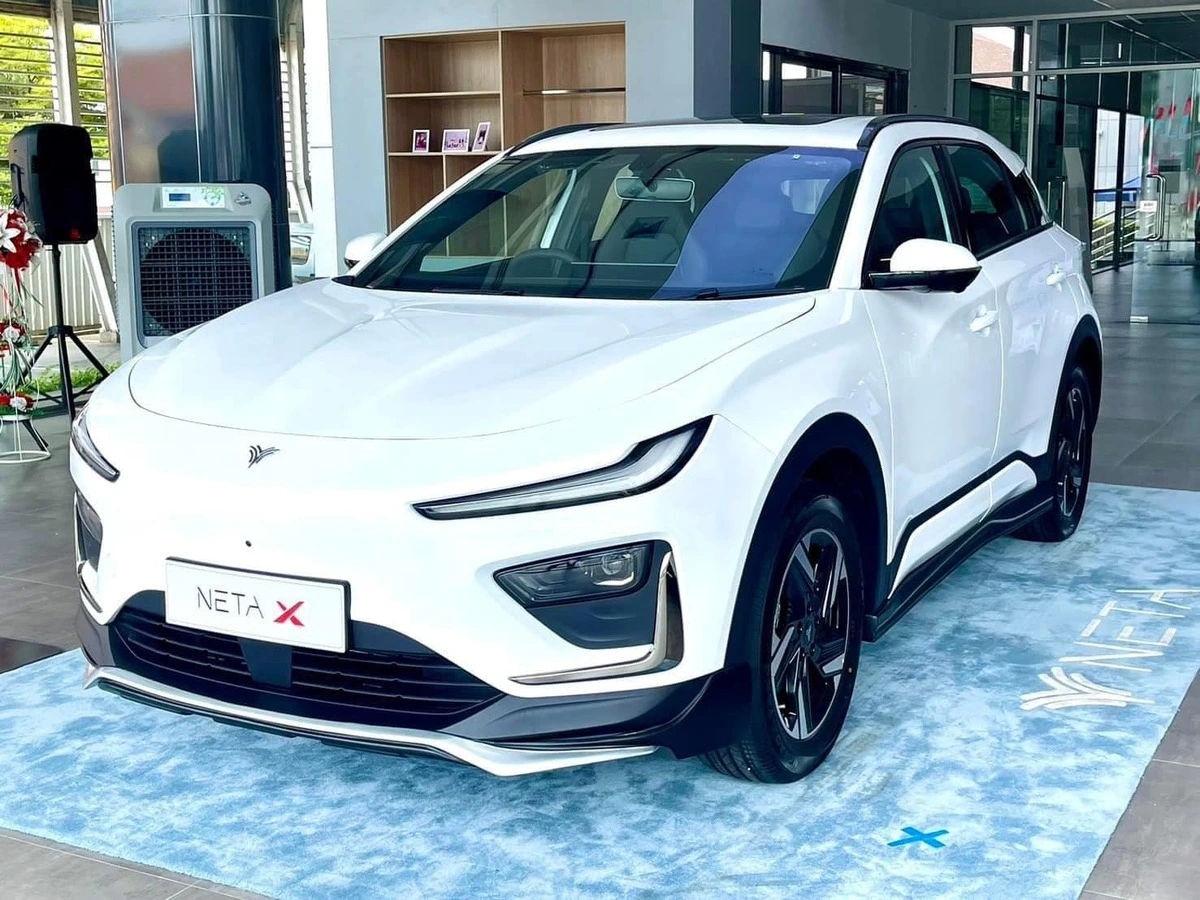
The NETA X is a fully electric SUV in the sub-one million budget range. There are two variants: the comfort and the smart model, both seat 5 passengers. Both come with similar features, such as a glass roof, electric front seats, and a 15.6-inch infotainment screen, though the comfort version lacks driving assist systems, an electric tailgate, and wireless charging.
Performance and efficiency: It features a front-mounted electric motor producing 163 horsepower (hp) and 210 Newton metres (Nm) of torque. The comfort variant has a range of 401 kilometres (km), while the smart variant reaches 480 km.
Price: The NETA X Comfort is 739,000 baht, and the Smart variant is 799,000 baht.
| Pros | Cons | |
| ✅ Spacious interior ✅ Advanced technology ✅ Good safety features ✅ Cost-effective | ❌ Performance limitations ❌ Limited brand perception |
2. NETA V
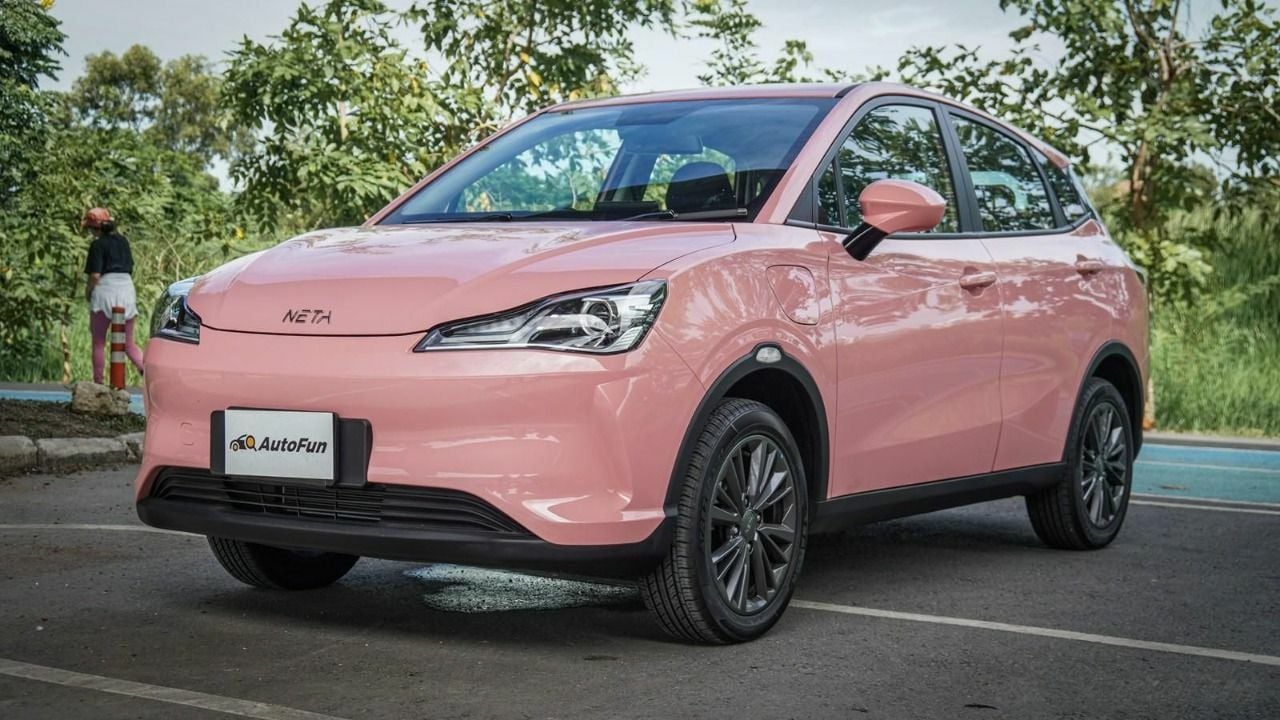
The Neta V is a compact electric SUV designed for urban living. The Neta V seats five, and comes with all the industry-standard infotainment options, with a 14.6-inch touchscreen infotainment screen used to control all your vehicle functions in one place.
Functionalities include smart key access and safety measures like ABS, ESC, multiple airbags, parking sensors, and a rear-view camera. The interior also features ergonomic seating, an N95 air filtration system, and multiple USB ports for device charging.
Performance and efficiency: The electric motor squeezes out 95 hp, and its 40.7 kWh lithium-ion battery delivers a range of 384 km on a full charge. Charging can be completed with AC in 8 hours, or using DC fast charging, which takes just 30 minutes for 30% to 80% capacity.
Price: The Neta V LITE comes in at 429,000 baht, and the SMART model is listed at 459,000 baht.
| Pros | Cons | |
| ✅ Affordability ✅ Lightweight ✅ Government EV subsidies | ❌ Performance limitations ❌ Basic interior ❌ Limited safety features ❌ Ride comfort concerns |
3. MG ZS EV
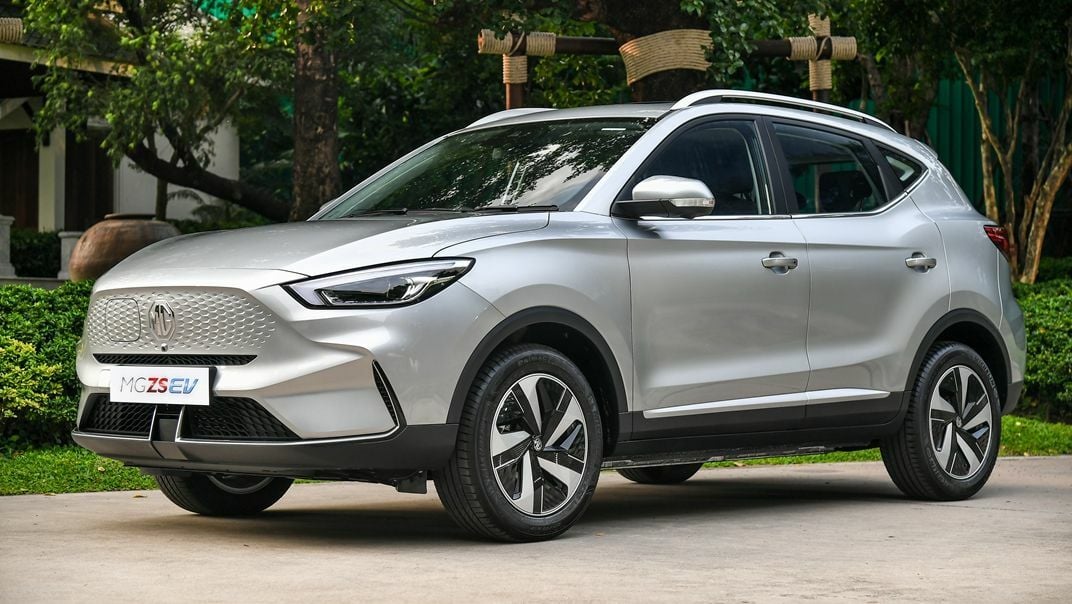
The MG ZS EV is another example of a well-priced and fully equipped EV SUV, featuring a spacious cabin, a 10.1-inch touchscreen, and the MG iSMART app for remote control and connectivity. Passengers can enjoy wireless phone charging, multiple USB ports, and a 6-speaker sound system.
Safety is paramount, with the MG Pilot suite offering adaptive cruise control, lane keep assist, and a 360° camera, along with a rigid body and multiple airbags.
Performance and efficiency: The electric motor delivers up to 177 horsepower and 280 Nm of torque, enabling rapid acceleration from 0 to 50 km/h in just 3.6 seconds. Available in two battery sizes, the ZS EV offers ranges of up to 320 km or 440 km, with support for rapid charging which can take your battery from 10% to 80% in about 36 minutes using a 100 kW charger.
Price: The list price for the standard MG ZS EV D model is 949,000 baht. However, deals and promotions are very frequent and you can often find them for 100,000 to 200,000 below MSRP.
| Pros | Cons | |
| ✅ Impressive range ✅ Spacious interior ✅ Advanced driver-assistance features ✅ Good performance ✅ Charging flexibility | ❌Charging speed limitations ❌Interior quality concerns ❌Road noise ❌Poor service reputation |
4. BYD Dolphin
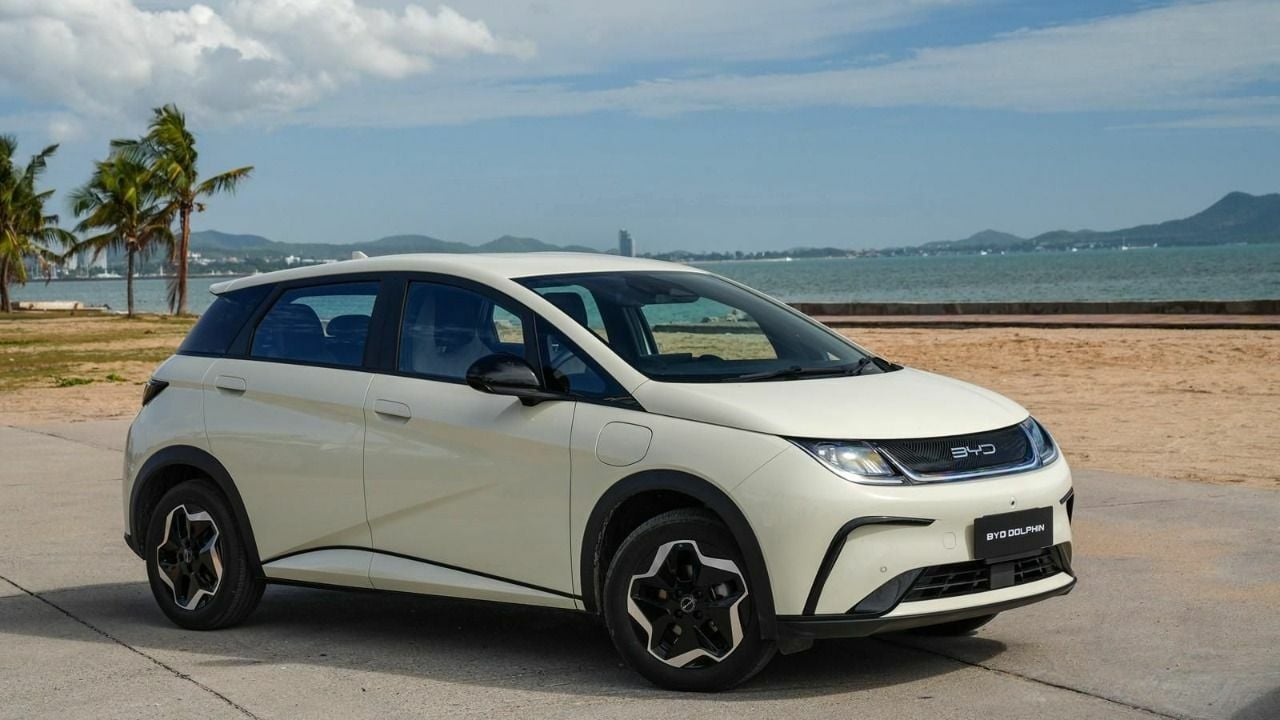
Although technically not an SUV, the BYD Dolphin is just too good of a deal to ignore. As a keystone in the subcompact EV segment, The Dolphin features a 5-door hatchback style, with dimensions offering ample space.
Inside, the Dolphin seats five and includes a flexible 60/40 split-folding rear seat, creating up to 1,310 litres of cargo space. A 12.8-inch touchscreen provides infotainment, with Apple CarPlay and Android Auto support.
The Dolphin also includes advanced safety features, such as lane departure warning, adaptive cruise control, and automatic emergency braking.
Performance and efficiency: The Dolphin comes in two motor configurations: the standard range with 94 hp and the extended range with 201 hp. Both versions use BYD’s LFP blade battery, with ranges of up to 410 km and 490 km, respectively.
Price: The Dolphin’s standard model comes in at 569,990 baht, and the extended range is slightly more at 709,990 baht.
| Pros | Cons | |
| ✅ Affordability ✅ Good range ✅ Impressive performance ✅ Ample driver-assistance features | ❌ Performance limitations in standard models ❌ Subpar interior quality ❌ Charging speed limitations ❌ Road noise |
Hybrid SUV options
5. Nissan Kicks
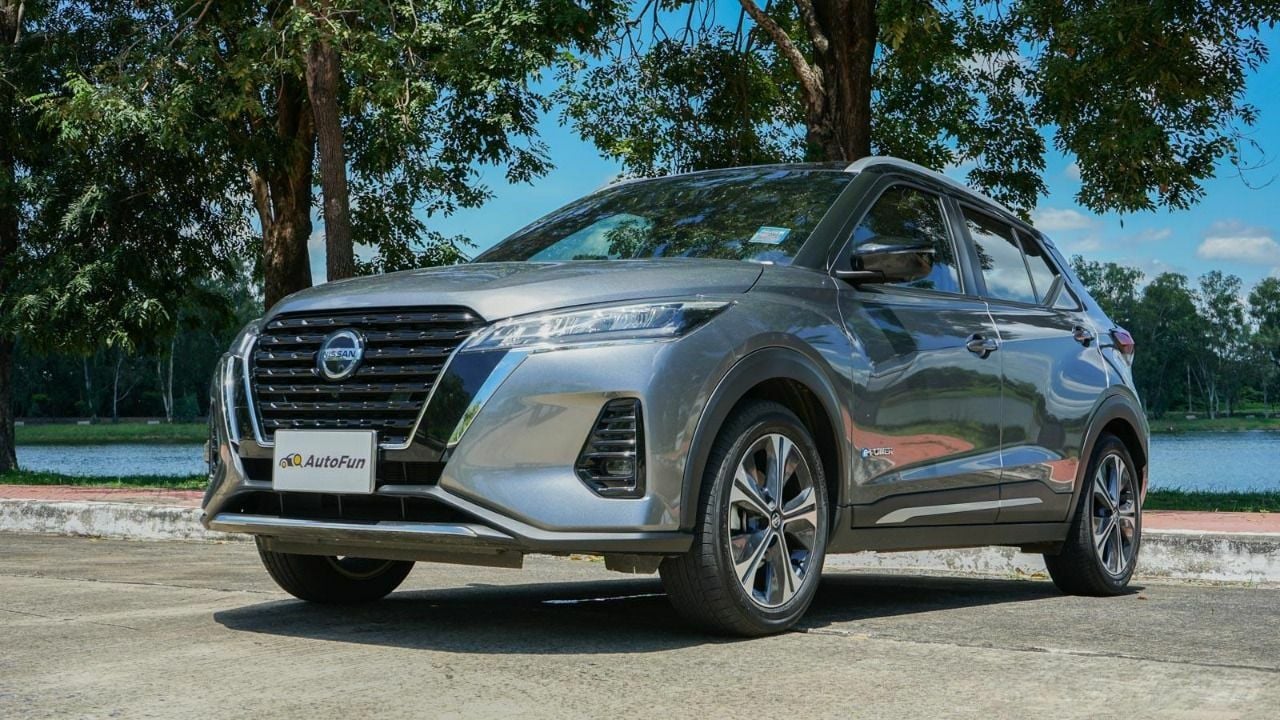
When it comes to hybrid options, the Nissan Kicks is a prime example of a hybrid SUV done right. Their entry model version is still loaded, seating up to five passengers. Not to mention their e-POWER hybrid technology, driven entirely by electricity but fueled by gasoline.
The Kicks features a rear seat that folds 60:40, a smart key, an electric parking brake, 6 airbags, and a front collision warning system with brake assist.
Performance and fuel efficiency: It is powered by a front-wheel drive electric motor producing 136 horsepower and 280 Nm of torque, with a 1.2-litre 3-cylinder gasoline engine generating electricity. The average fuel consumption, reported from Nissan is 26.3 kilometres per litre (km/l).
Price: The Nissan Kicks base model (E) is 779,900 baht, and the slightly upgraded V model comes in at 849,900 baht.
| Pros | Cons | |
| ✅ Relatively affordable ✅ Decent fuel economy ✅ Advanced safety features ✅ Spacious interior ✅ Intuitive infotainment system | ❌ Leisurely acceleration ❌ Limited rear legroom ❌ Limited to front wheel drive |
6. Suzuki XL7 Hybrid
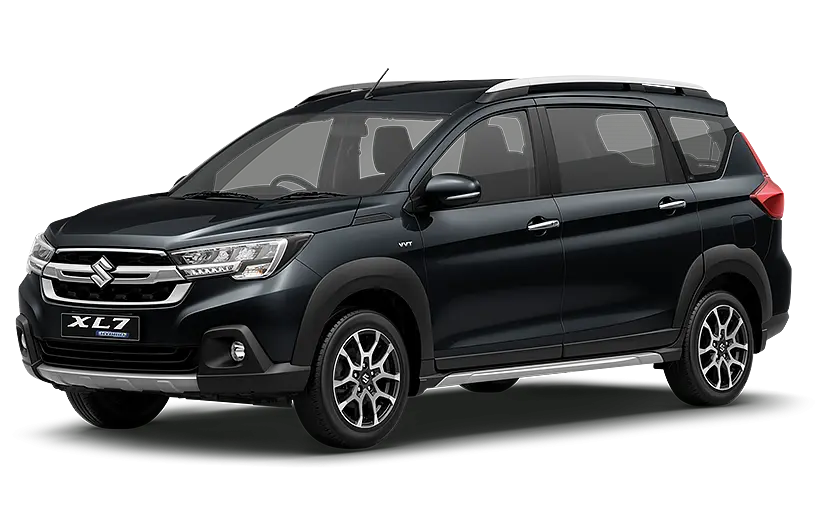
The Suzuki XL7 Hybrid SUV is the only model in this price range with 3 rows of seats, accommodating 7 passengers in a 2-3-2 seating arrangement. It features hybrid technology, cruise control, a 10-inch touchscreen audio system, wireless smartphone charging and a second-row seat that can recline, slide, and fold 60:40. Safety features include 2 airbags and a rearview camera.
The hybrid system in the XL7 is designed specifically to enhance fuel economy rather than increase performance, making this nifty 7-seater ideal for urban commuting.
Performance and fuel efficiency: It has a 1.5-litre 4-cylinder gasoline engine with 121 horsepower and 145 Nm of torque, paired with a CVT automatic transmission driving the front wheels. Autoindustriya reports that the XL7 does up to 48.4 km/l.
Price: The Suzuki XL7 Hybrid GLX is priced at 799,000 baht.
| Pros | Cons | |
| ✅ Most spacious option as a 7 seater ✅ Impressive fuel efficiency ✅ Apple CarPlay and Andriod Auto support ✅ Comfortable ride quality | ❌ Limited power output ❌ Basic interior quality ❌ Suzuki recently closed its Thai production plant |
7. MG VS HEV
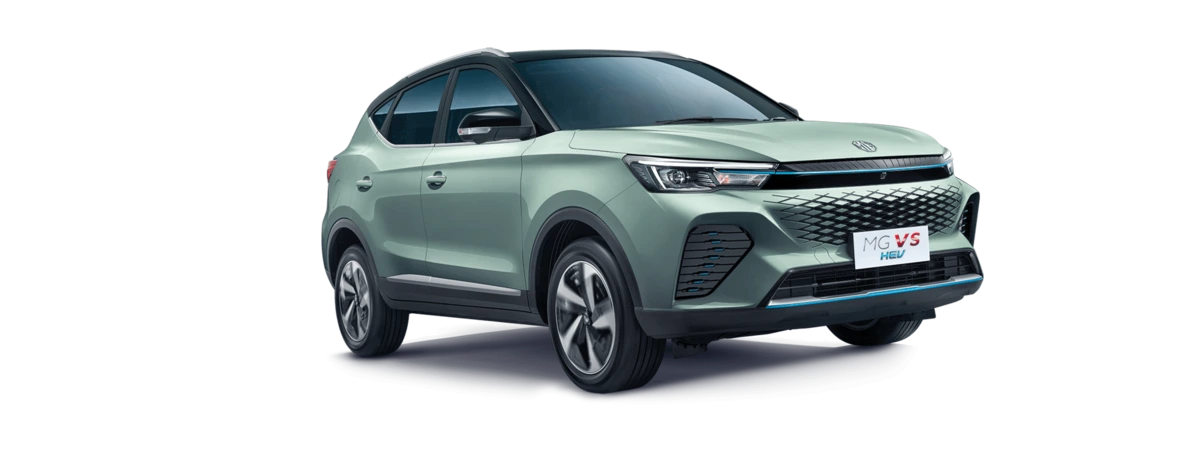
The MG VS HEV features hybrid technology based on the MG ZS, accommodating 5 passengers. The VS HEV comes with a 12.3-inch touchscreen audio system with MG’s i-SMART technology, 6 airbags, a 360-degree camera, and stability control while cornering. The highest variant offers a power-adjustable driver’s seat and a 60:40 folding rear seat.
Its hybrid system allows for interchangeable driver modes, allowing for both performance and efficiency modes.
Performance and fuel efficiency: It has a 1.5-litre 4-cylinder gasoline engine producing 109 horsepower and 142 Nm of torque, working alongside an electric motor producing 95 horsepower and 200 Nm of torque. Paired with an E-CVT automatic transmission driving the front wheels, the VS HEV has an average fuel consumption of 16.7 km/l.
Price: The base model MG VS HEV D is priced at 829,900 baht, and the upgraded X model is priced at 899,900 baht.
| Pros | Cons | |
| ✅ Good power ✅ Multiple driving modes ✅ Advanced safety features ✅ Spacious interior ✅ Innovative technology | ❌ Poor performance in eco mode ❌ Weight considerations may affect handling ❌ Interior material quality ❌ Subpar service reputation |
8. Honda HR-V e:HEV
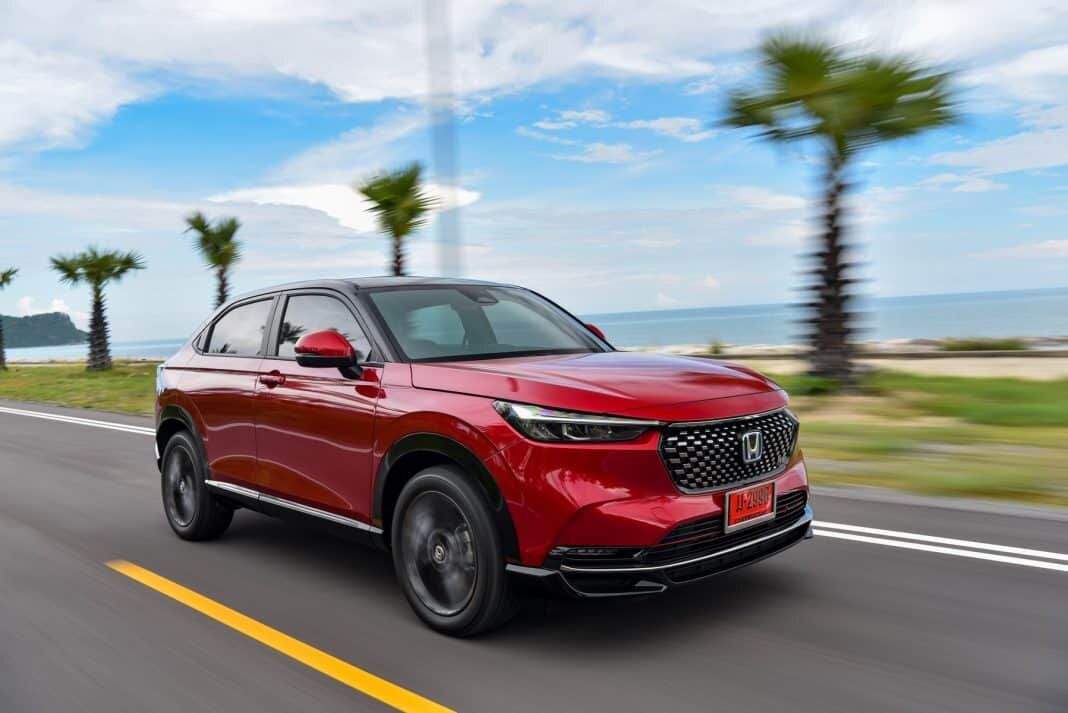
The Honda HRV HEV is a sporty hybrid SUV, that offers ample interior space, including a versatile rear seating area that expands cargo space up to 1,274 litres.
Inside, the HRV comes with a 9-inch infotainment system compatible with Apple CarPlay and Android Auto. The heated seats and a power tailgate are a plus. Honda’s SENSING suite of safety features is also included, with adaptive cruise control, collision mitigation, and lane-keeping assistance, making it a well-rounded choice.
Performance and fuel efficiency: The HRV is powered by a 1.5-litre 4-cylinder engine paired with two electric motors. The hybrid system delivers a combined output of 130 hp and 253 Nm of torque. Mated to an E-CVT transmission, the HRV does up to 18. 4km/l, according to Headlight Magazine.
Price: Until the end of 2024, the Honda HR-V e:HEV is on promotion and is priced at 899,000 baht.
| Pros | Cons | |
| ✅ Great build quality ✅ Advanced safety features ✅ Smooth driving experience ✅ Spacious interior ✅ Fuel efficient | ❌ Somewhat underwhelming performance ❌ Noise levels from CVT gearbox ❌ Higher price point |
What should I pick?
But if you are still torn in choosing between an EV or HEV, here are some advantages and disadvantages of each option.
| Category | Electric Vehicles (EVs) | Hybrid Electric Vehicles (HEVs) |
|---|---|---|
| Advantages |
|
|
| Disadvantages |
|
|
EVs can offer a greener alternative due to the environmental benefits of producing no tailpipe emissions. They also require less maintenance overall which equates to lower long-term costs. However, they may face challenges in terms of range limitations, charging infrastructure and higher initial costs.
On the other hand, HEVs can help alleviate your range anxiety due to a petrol backup, which means no reliance on charging stations. But just as they are easier to integrate into existing petrol infrastructures, they are also reliant on petrol. If you are concerned about the environment, albeit less than normal cars, hybrids still produce emissions, and will need more routine maintenance checkups.
But before you make a decision on choosing your next SUV, remember that prices, features, and specifications can change over time. It’s always a good idea to double-check the details with your dealer before buying your first car. This way, you can feel confident that you’re getting the best deal. Now, it’s time to start exploring dealerships and online platforms and pick your next battery-powered car.
Latest Thailand News
Follow The Thaiger on Google News:


























